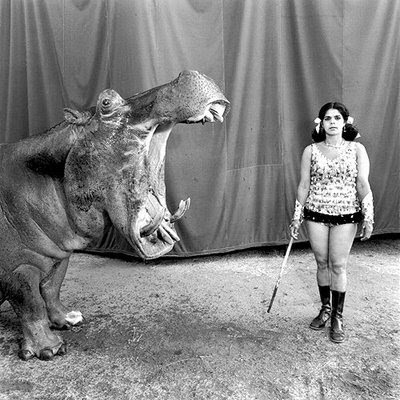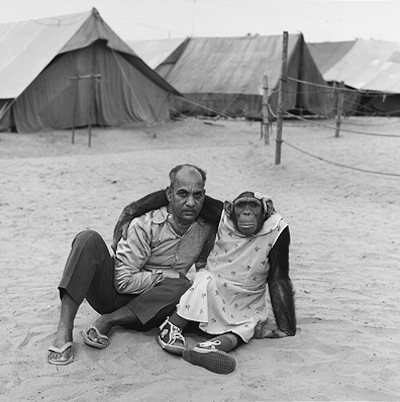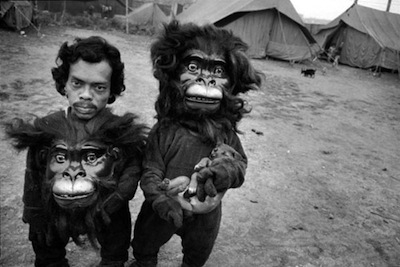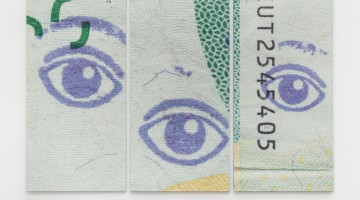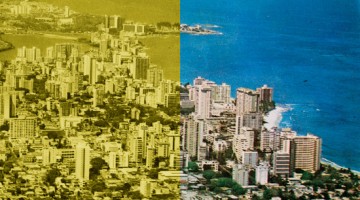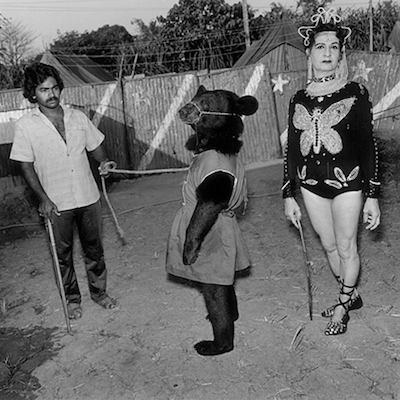
Mary Ellen Mark, “Gloria and Ravi the Animal Trainer with His Bear Gemini”, Great Gemeni Circus Perintalmanna, India, 1989.
Humans have a strong impulse to anthropomorphize animals with a cute face. A kitten in mittens is funny because of its lack of coordination, and a bear on a unicycle is as weird as the sort of person who rides a unicycle. It’s a limbo between an animal and a human caricature. For the people who seek out this type of entertainment, (including the vast majority of internet users), the cognitive result of anthropomorphization is that the animal is both de-humanized and considered inferior. It is why a lot of zoos and circuses are able to persist, and why they are so crushingly sad.
The animals in Mary Ellen Mark’s “Indian Circus,” photographed and produced between 1982 and 1992 at Jenkins Johnson Gallery, are a rare exception. The dynamics between the animals and their human trainers resemble family members and co-workers, with all of the complexity that exists between human interpersonal relationships: there is tenderness, the freedom to be an individual, and the capability of killing each other. Keeping animals in cages and forcing them to perform is moral quicksand, but Mark’s subjects stand on higher ethical ground than most. Even though the trainers dress up a bear, they do not ignore it’s feral behavior; even though it’s a bear, it has intelligence and personality.
In their downtime in dusty lots, the animals, dwarves, acrobats, wives and mothers of “Indian Circus” have an awareness and sense of self that is wonderful to look at. Their presence forces self-reflection, catching the viewer somewhere between wildly jumping monkey thoughts and being mentally present. Mary Ellen Mark is known for photographing the types of people society avoids eye contact with—the destitute poor, a disturbingly precocious eight year old—but “Indian Circus” is a balm for all of that. It’s a path to the type in-the-moment perception that helps you lock eyes with others and take them as they are.
Mary Ellen Mark’s “Indian Circus” is on view at Jenkins Johnson Gallery through October 27. http://www.jenkinsjohnsongallery.com/flyers/12.08..MEM_PR.html
-Kendall George
